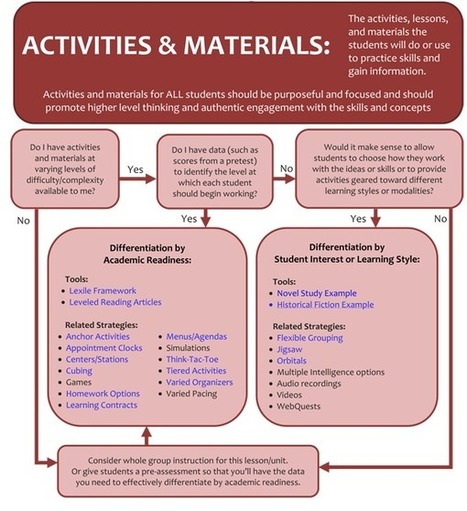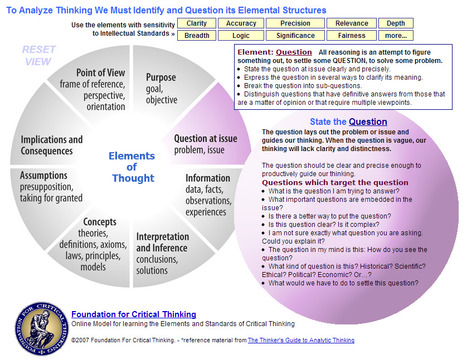"Differentiation is adjusting and modifying what skills and concepts student learn, what materials the use, and/or how their learning is assessed based on the needs of the students.
Our students are not all the same, so we cannot expect that teaching a lesson one way will reach every student."



 Your new post is loading...
Your new post is loading...










We hopefully are all trying to differentiate, but sometimes we need that creative push and encouragement. This is a wonderful resource with printable infographics for coming work areas and links to concepts and other resources to really get you thinking in every direction outside of the box - each student will gain something out of you using this.
These differentiation flowcharts will prompt teachers to make good decisions around scaffolding of student learning.
Check out concepts, assessments, and activities for differentiation...